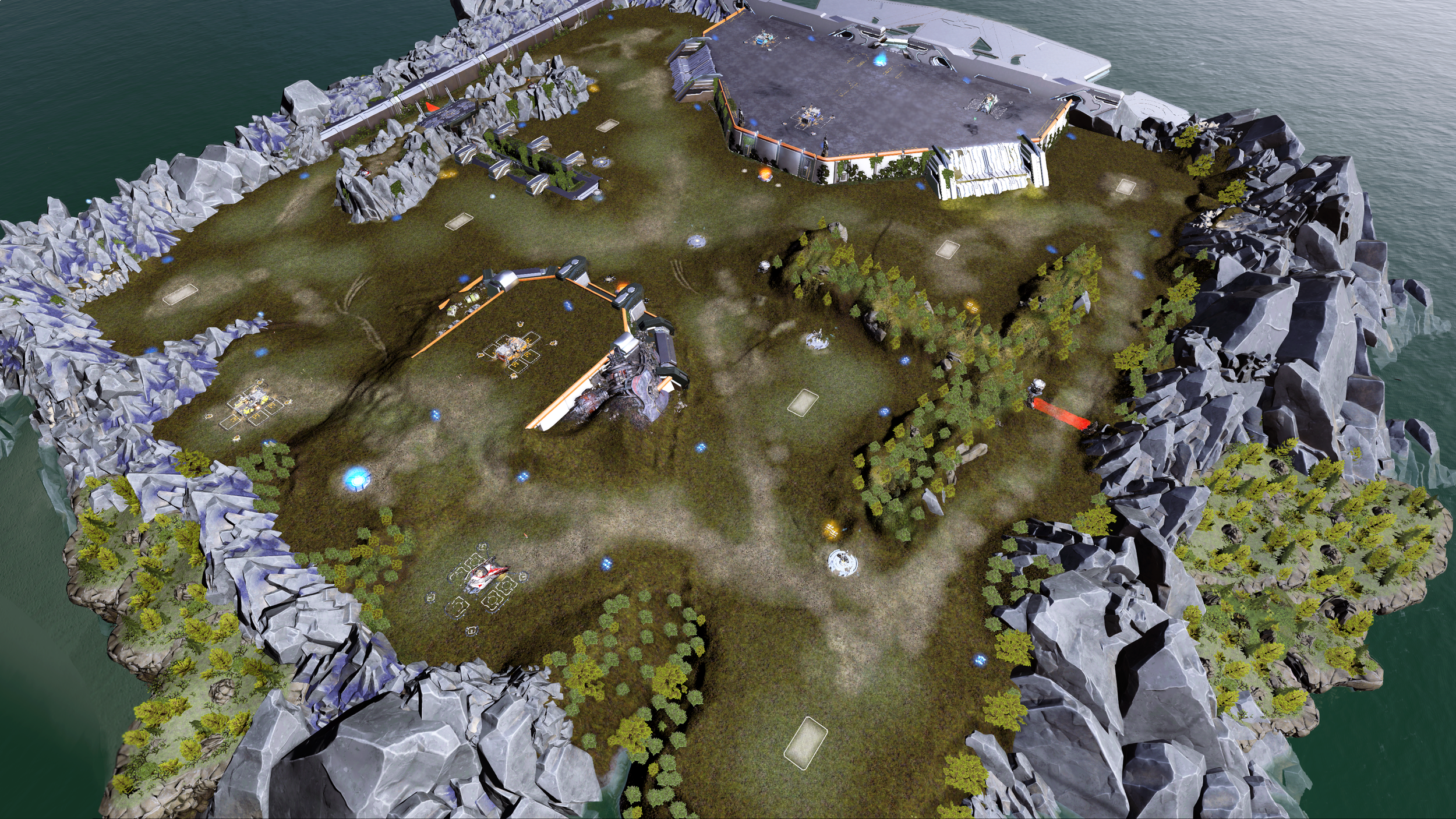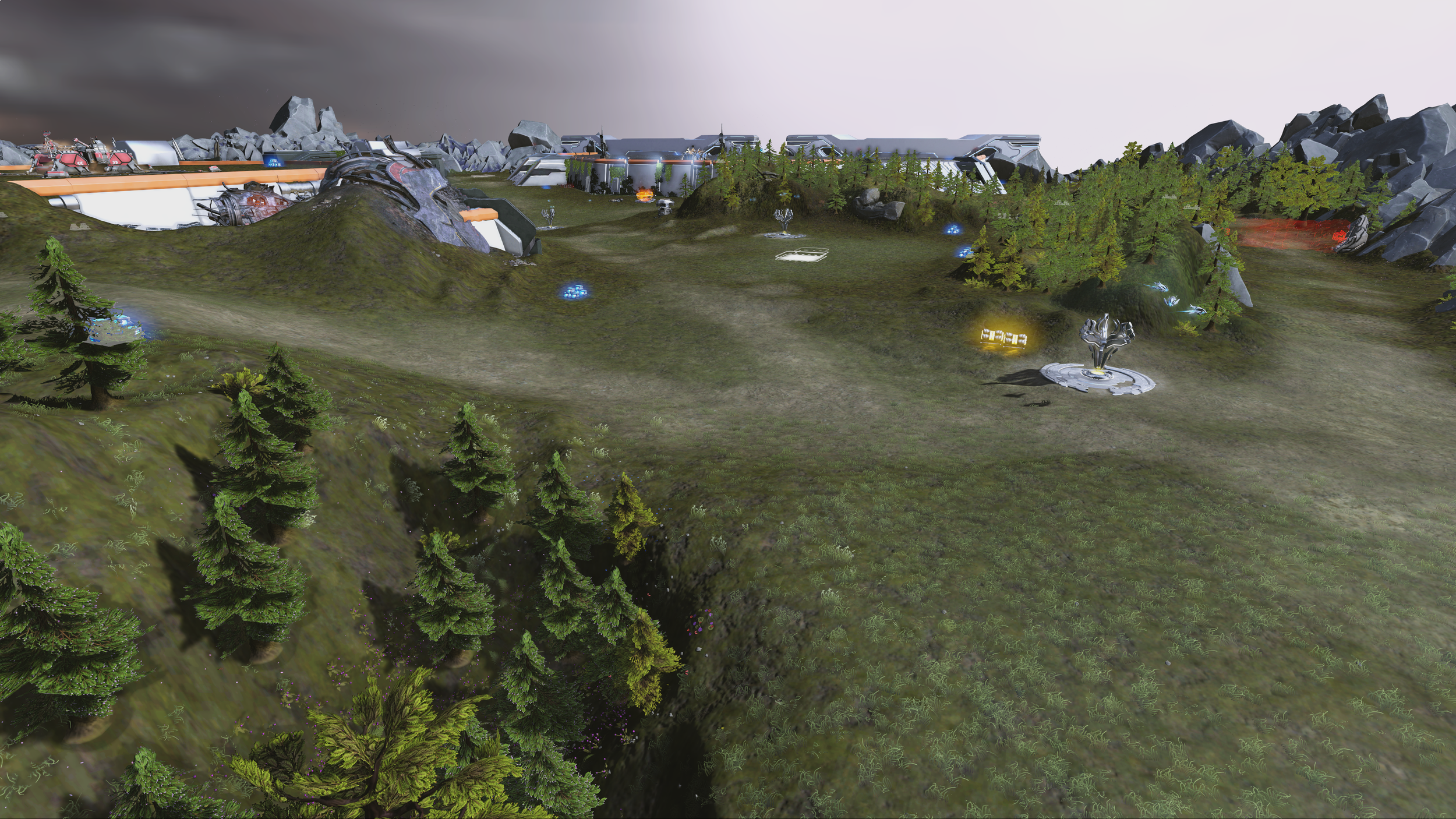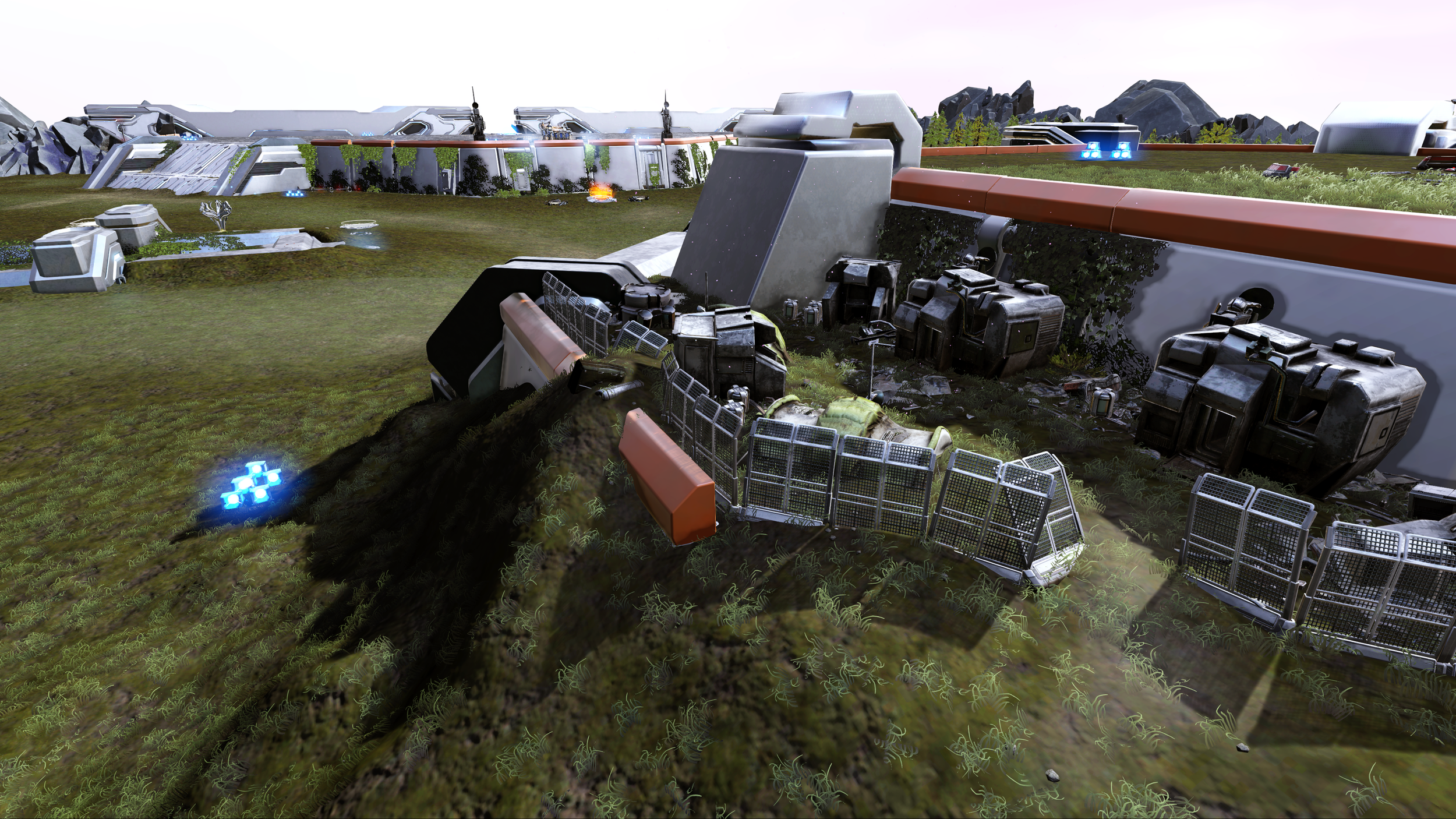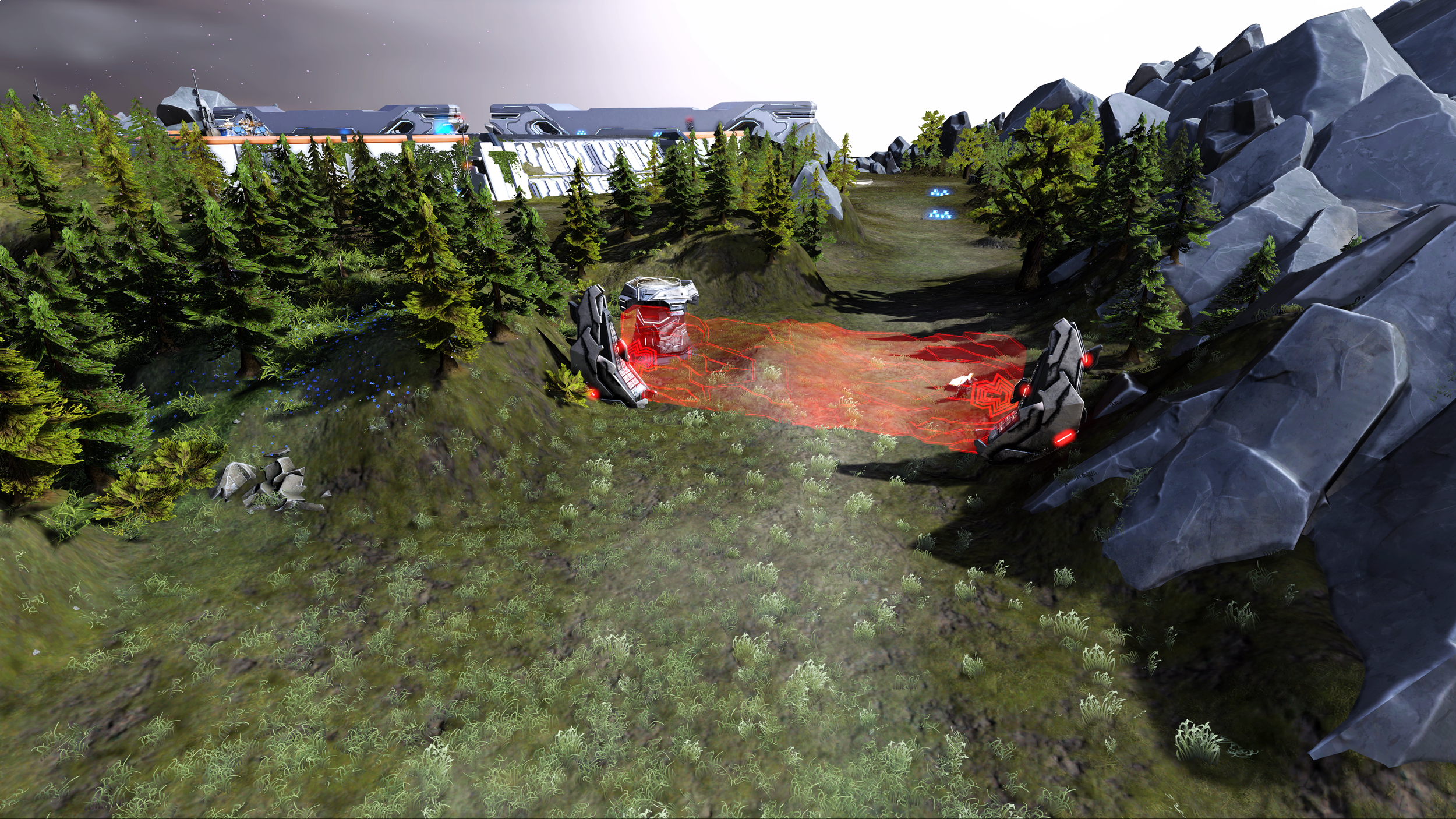Halo Wars 2
Halo Wars 2 is a real-time strategy game where players are controlling entire armies of Marines, Warthogs, Scorpion tanks, and Spartans and more on the battlefield from the Commander’s point of view.
Initial Release: February 2017
Platforms: Xbox | PC
Genre: Real-time Strategy
Engine(s): Phoenix Engine and other proprietary tools.
Role(s) and Responsibilities:
Game Design
Designed and implemented the map Fort Jordan in Halo Wars 2, which shipped as a post-launch update.
Designed and implemented balance updates for Halo Wars 2 for multiplayer using matchmaking data.
Built new game modes and player abilities in Halo Wars 2 using existing systems.
Designed the playlists, seasons, and leaderboard updates.
Art Support
Produced the environment for the Fort Jordan Halo Wars 2 map.
Additional Work
Worked on the title as a test lead for the multiplayer and the Terminus Firefight modes as well.
Fort Jordan




Fort Jordan was a map I created solo in my spare time for Halo Wars 2 as a way to teach myself all the development tools on the project. My original intention was to try and release the map once it was done so I started with basing it off of the original Halo Wars map “Fort Deen” due to its popularity and player’s desire for it to return. It was also an intentional design decision on my part to make it a human themed level with more greenery to balance out the large number of desert and forerunner themed maps already in the game.
The map is layout is designed with 3v3 in mind due to its size but I ensured that the map was playable and scaled to support 2v2 as well as 1v1 matches. There was multiple design hurdles I had to overcome while working on the map, such as having one-way teleporters at each team’s base as these did not exist outside of a couple instances in the campaign. So I had to rebuild them for use in the map to keep the spirit of the original map in place. Same with the shield walls on the outer lanes. Halo Wars 2 also has various new mechanics I had to account for while designing the map as well as new units. I took extra care to ensure these all flowed well and created interesting combat areas for the players to fight in for control of the map.
My work done on the map:
Level layout including base placement, nodes, and resources
Custom level objects for one-way teleporters and shield walls
Balance around 1v1, 2v2, and 3v3 modes
All level dressing for the environment
Designed the configurations for Deathmatch, Domination, and Strongholds game modes
All custom art related to the level for the frontend
As the solo developer of this map I also had to learn the code involved with setting up the map in the actual level carousel, unlocking the lore entries associated with it, and defining the game modes. This helped a lot in learning how to reverse engineer code when working on implementing a design. As part of the playtesting of this map I also managed to get the help of some of the top players in the ladder into an internal test group, this allowed me to work directly with them and interpret their feedback into meaningful changes with the map.
Game Balance
Game Modes
I was the primary designer handling the balance of the game after the Awakening the Nightmare DLC was released and people shifted focus onto Halo: The Master Chief Collection. Up until that point I was giving input on balance and various changes, but after AtN I was in charge of making all the decisions, changes to the XMLs, building the overlay packages, coordinating playtests for them, and releasing them to the public.
As a major part of the balance design, I made sure that all of the units had separate files built out specifically for multiplayer. This was not a feature at launch and caused a lot of issues when balancing because making a tweak to a unit in multiplayer could impact the campaign and break the pacing. Once all that was built out I analyzed weekly telemetry data on winrates for leaders, which units were/weren’t being used, which strategies players were using, abusable techs and leader powers, etc. I also worked with some of the top players in the ladders to playtest the changes before they would go live.
Here is a breakdown of some of the work I did for balancing the game:
Brought the 16 leaders to less than a 1% difference in win/loss
Created new abilities for leaders to make their toolkits more unique and tailored to the leader’s intended playstyle
Balanced various leader powers to make sure there were no “useless” ones in the trees
Balance changes all units to make sure they filled their intended roles
Built individual multiplayer files so that all units and powers could be balanced per mode
Map balance on available resources
Made the only balance changes to the Blitz game mode
Built the wave configurations for Terminus Firefight
Tracked KPIs and player sentiment for balance
Made balance changes to the campaign for a better player experience
Balanced the in-game challenges based on completion rates and where player engagement was highest.
My work on balancing the title gave me a lot of experience working across multiple disciplines and strengthening my skills in defending design decisions. I would explain the reasoning behind every change being made for approvals before release which ensured that I know the exact impact that each one was intended to have.
Some work I did on The Yappening event included:
Achieved the goal of a new game mode with a chaotic, non-traditional RTS feel to it
Created Global balance changes that impacted the gameplay, such as forcing players to focus on map control in order to upgrade their bases instead of using resource generating buildings
Built out units into sets of “tiers” which signified which state the game was in with tier 1 units being more infantry and skirmish oriented and tier 4 units being massively buffed Condors or Scarabs meant to end the game.
This event allowed me to make a large variety of custom leader powers specific to the mode. Some of these changes were also used as a way to gauge if people would like some changes and ultimately made it into the standard modes.
I used this as a test-bed to implement the addition of new features, such as adding new VFX to attacks and abilities, or by adding new unit behavior without impacting the base experience.
While working on balance for Halo Wars 2, I also created various XMLs and custom unit setups to allow for new game modes to be easily added by other designers. To showcase this work we had an in-game event for a weekend that aligned with April Fool’s Day called The Yappening, which centered around the leader of Yapyap and a blog post stating that he found the “Key of Balance”. Overall the event was well received as it was a breath of fresh air in the game with a unique and chaotic mode, but there was negative backlash in how the mode was presented, which was that it temporarily replaced the standard game modes.
Ultimately the work done on the event was very impactful both in terms of learning the limits of the design changes that could be made without engineering support as well as building the framework for potentially adding new game modes in the future. It also taught me a lot about balance/combat design in general by seeing what players enjoyed and considered “unbalanced” in an intentionally unbalanced space.


